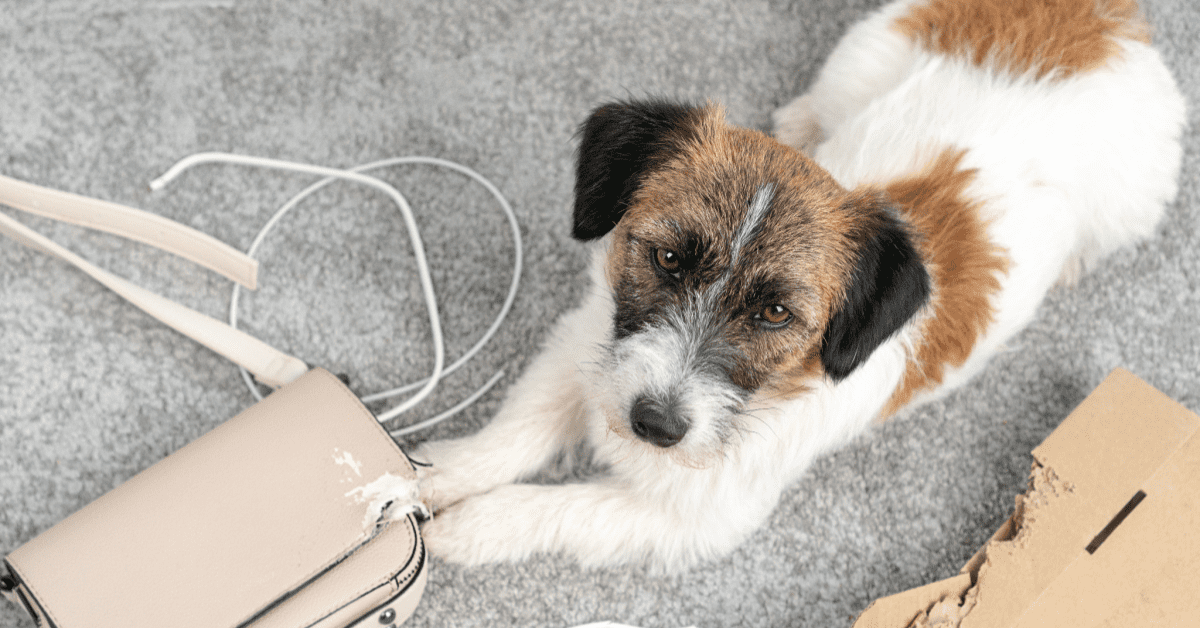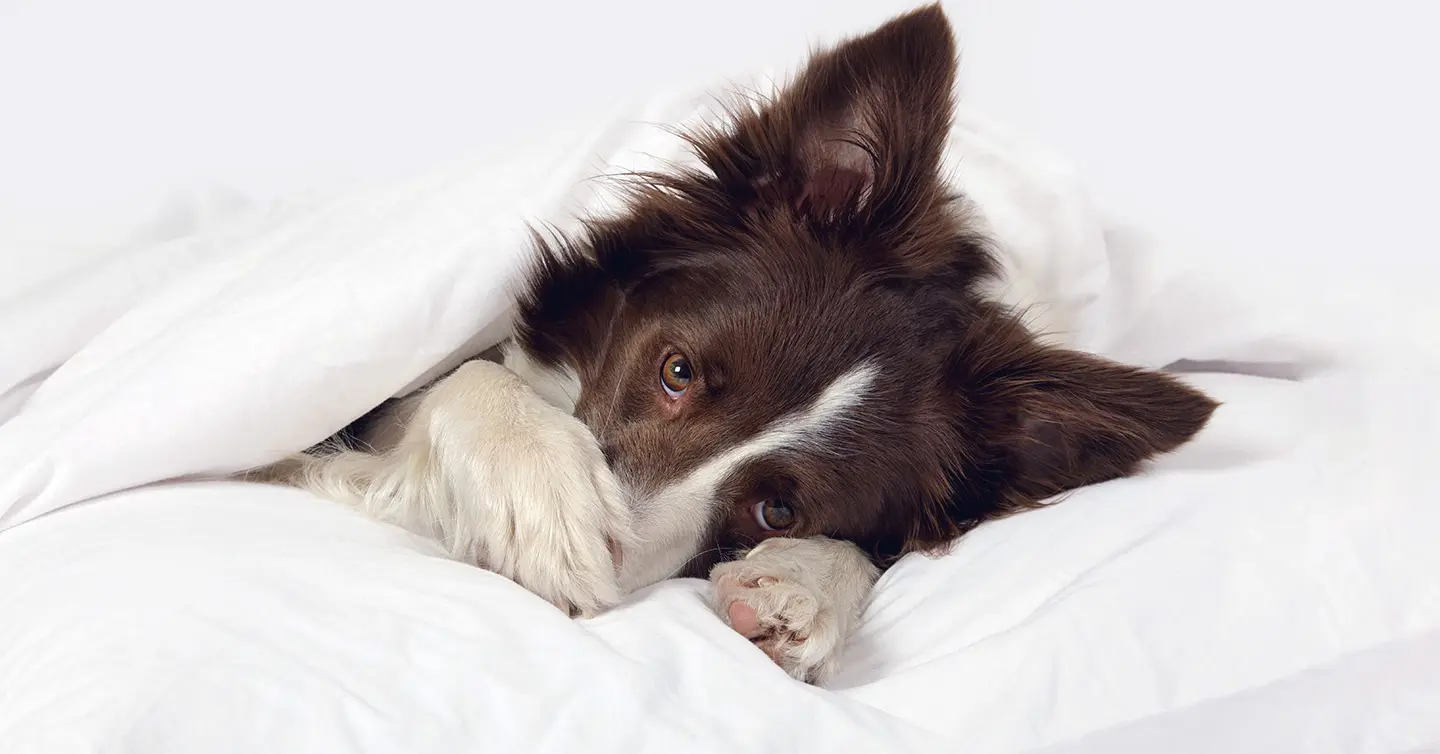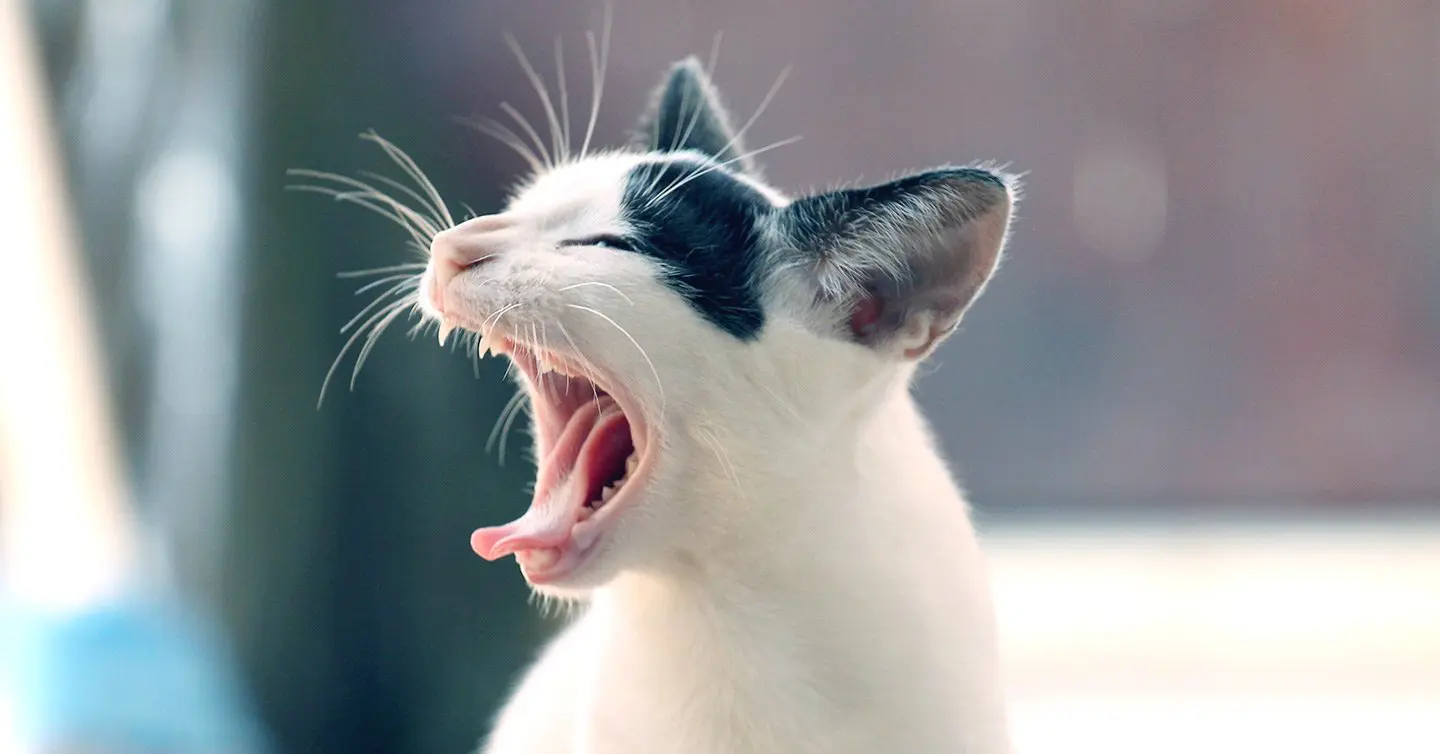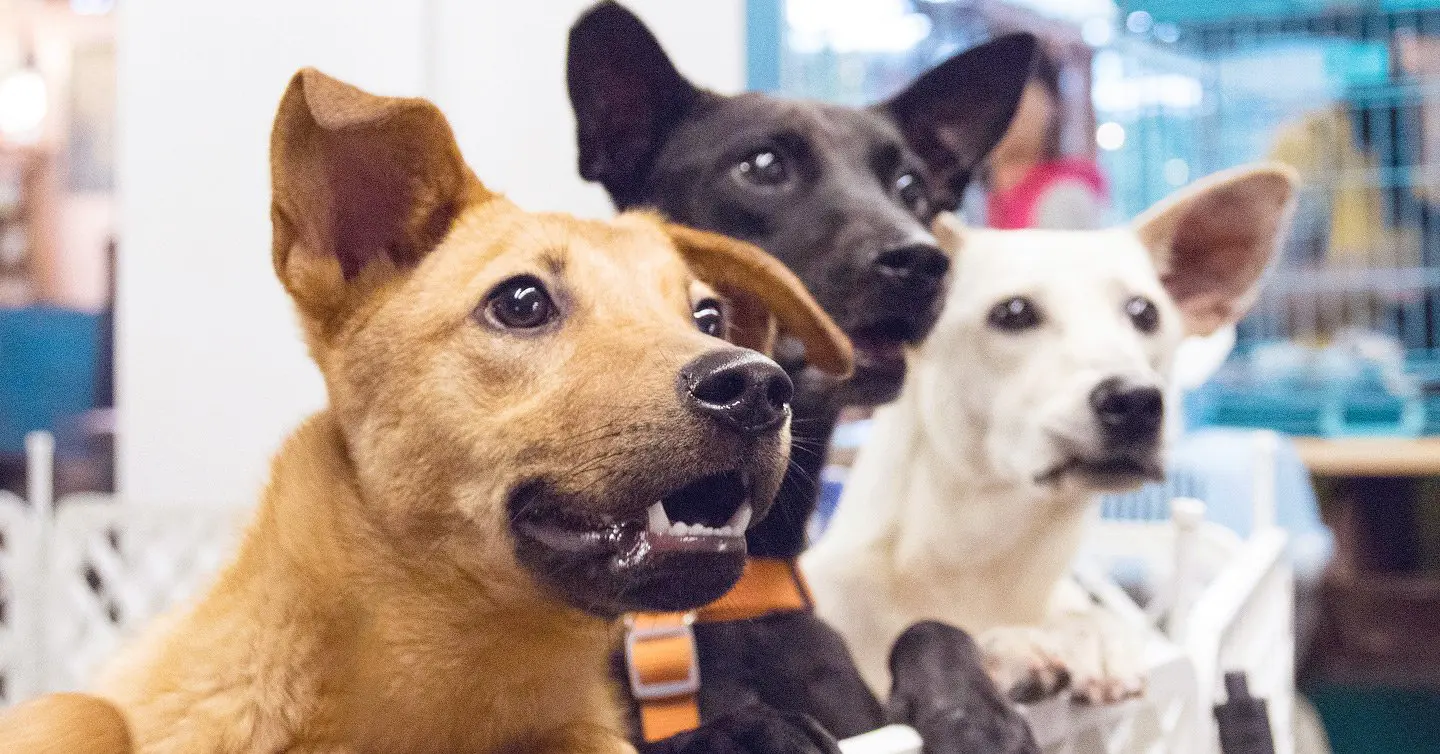Key Points
- Pica in dogs is a condition where they crave and ingest non-food items.
- Symptoms of pica include licking objects obsessively, swallowing non-food items, and sometimes vomiting or passing these items.
- Pica may stem from medical conditions like parasites or neurological disorders, or from mental health conditions like boredom or depression.
- The truth is, we don’t always understand why dogs eat the strange things they do.
Any seasoned dog parent knows that dogs will eat some questionable stuff (yes, socks, rocks, and dog poo, we’re looking at you).
But if your pup is making a habit out of munching on non-food items like plastic, clothing, or even poop, it might be more than just curiosity. It could be a condition called pica.
“Sometimes it’s hard to tell the difference between normal chewing behavior and your dog possibly having pica, especially if you have a young dog,” says Dr. Candy Akers, DVM, a holistic veterinarian at Journeys Mobile Veterinary Services. She explains that while bored dogs or teething pups chew on random things, dogs with pica take it further by actually eating them.
While any dog is at risk of pica, Akers adds that younger pups and dog breeds with high oral fixations — such as Retrievers — may be at higher risk.
Whether your dog has recently been diagnosed with pica or you suspect they might have this problem, we’re covering everything you need to know here, including common symptoms, treatments, and causes.
What is pica in dogs?
Pica in dogs is a condition where pups decide non-food items are the tastiest treats ever. “It’s basically your dog deciding that inedible things are suddenly super appetizing, even though they have no nutritional value,” Akers says.
Unfortunately, pica isn’t just a quirky behavior — it can be life-threatening. Eating foreign objects can cause intestinal blockages, nutritional deficiencies, poisoning, tissue death, or even rupture of the intestines if left untreated.
Plus, chewing non-food items and regularly vomiting can injure your dog’s teeth, causing dental issues such as broken teeth, gum injuries, or dental infections.
Although dogs with pica may consume a variety of objects, some of the most common “snacks” include:
- Rocks and stones
- Plastic items
- Clothing and fabrics (especially socks)
- Paper and cardboard
- Sticks and wood
- Metal items

What about dog poop? A vexing question, to be sure. While poop eating, a canine behavior known as coprophagia, can be a stomach-turning habit for us humans, it’s normal for many dogs and a separate (though often related) behavior problem in dogs.
Pica in dogs: Symptoms
If you catch your dog obsessively licking objects like concrete, wooden fences, or the rug, Akers says that might be an early sign of pica.
Other signs of pica include your dog consuming non-food items and vomiting or passing them repeatedly. If your dog is eating non-food items, look for these symptoms.
- Diarrhea or constipation
- Abdominal pain
- Lethargy
- Bad breath
- Bloated stomach
- Choking
- Damaged teeth
- Loss of appetite
- Excessive drooling
If these symptoms accompany other signs of pica, check in with your veterinarian.
What are the causes of pica in dogs?
Reasons for pica in dogs range from medical to behavioral issues. The treatment will be different depending on the exact problem and severity. Some of the common culprits include medical conditions such as parasites, neurological disorders, endocrine disorders, or nutritional deficiencies. Mental health issues and certain medications can also sometimes cause your pup to have an increased appetite, resulting in non-food cravings. If this happens, try feeding your pup smaller, more frequent meals to manage their hunger.
Understanding the root cause of your dog’s pica is the first step towards helping them stay safe and healthy. To do this, you’ll need to work with your veterinarian. You can prepare for your vet visit by taking videos of your dog’s behavior problems.
Here are some common underlying causes of pica in dogs and how veterinarians diagnose them.
Mental health conditions
Eating non-food objects can be self-soothing for bored, stressed, or anxious dogs. Pica can also stem from mental health conditions such as compulsive behaviors, depression, and separation anxiety.
Your veterinarian will rule out any underlying health conditions and suggest ways to reduce stress and boredom at home, such as increasing social and mental stimulation. In severe cases, your veterinarian may recommend medication or help from an animal behaviorist.
“In my experience, pica is typically the result of some sort of imbalance in the body, whether it’s caused by disease, lack of the right minerals in their diet, or stress and anxiety,” Akers says.
Poor breeding
Dogs from backyard breeders or illegal imports may develop pica because of poor nutrition or a lack of stimulation in their early environment. Even with better care later, they may continue chewing on things like sticks, rocks, and clothing.
Nutritional imbalances, malnutrition, and deficiencies
An evaluation of your dog’s diet and lab tests may be necessary to address nutritional deficiencies. Akers says the first step in treatment is feeding pups high-quality, complete, and balanced dog food. Veterinarians may also recommend dietary supplements and address any underlying medical condition.
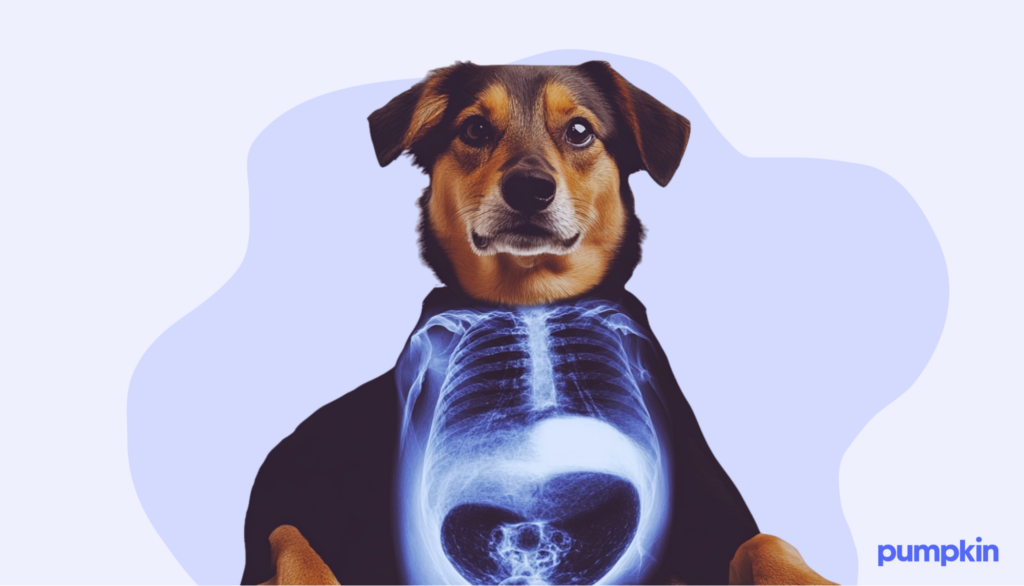
Gastrointestinal disorders
Akers says pica in dogs can be caused by gastrointestinal disorders like intestinal parasites, inflammatory bowel disease, pancreatic insufficiency, or malabsorption.
Fecal testing, blood panels, imaging, and sensitivity testing may be required to diagnose these disorders. Treatment may include deworming, medication, and dietary changes.
Neurological disorders
Pica in dogs caused by neurological disorders can be challenging to diagnose and manage, says Akers.
Whether caused by cognitive dysfunction, seizures, or brain lesions, your veterinarian may use imaging and lab tests for diagnosis. Treatment may include diet changes and medication.
Endocrine disorders
Endocrine disorders such as diabetes, Cushing’s disease, and thyroid disease can be diagnosed using blood tests. Treatment may include diet changes and medication.
Pica in dogs: Common treatments
Pet parents should start by working with their veterinarian to identify and treat the underlying cause of their dog’s pica. To keep dogs with pica safe, Akers suggests the following:
- Teach your dog the “leave it” or “drop it” command.
- Ensure that all hazardous objects are out of your dog’s reach.
- Keep a close eye on them when outside or during walks.
- Give your dog regular exercise, mental stimulation, and enrichment, such as scent work and puzzle games.
Prevent ingestion of toys by offering safe and indestructible chew toys.
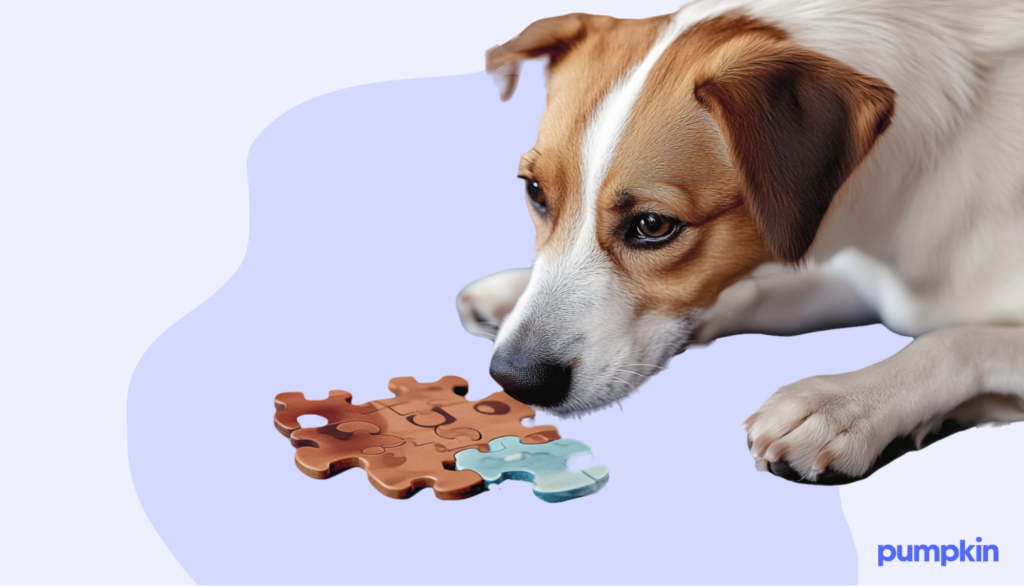
You can even coat objects in bitter apple spray or hot sauce to make them less appealing to your dog. In severe cases, Akers says a basket muzzle might be required on walks so your pup can’t physically get things into their mouth.
Finally, if all else fails, you may need to work with an animal trainer.
Do dogs grow out of pica?
Dogs, specifically puppies, grow out of chewing if they’re adequately trained at a young age. It’s your job as the owner to teach them what’s appropriate to nibble on. You can easily do this by redirecting your pup’s attention to toys or tasty treats.
But for pups that don’t grow out of pica, you may need behavioral training so a professional can help your pup resolve this issue before they swallow a dangerous object.
Pica in dogs: The bottom line
Dealing with pica can be challenging, but with patience and the help of health professionals, you can manage and protect your dog’s health. Remember, pica often has underlying causes, so getting to the root of the problem is essential. Regular vet checkups are a great way to monitor your pup’s health and catch early signs of pica and other health issues.
When the unexpected happens, having a pet insurance plan in place can help. A Pumpkin dog insurance plan can help cover the cost of eligible vet bills in the future, giving you one less thing to worry about.
FAQs
- https://www.journeysmobilevet.com/about-us/
- https://www.journeysmobilevet.com/
- https://www.sciencedirect.com/science/article/abs/pii/S1558787821000447
- https://www.petmd.com/dog/conditions/mouth/tooth-root-abscess-dogs
- https://www.akc.org/expert-advice/training/how-to-stop-chewing/
- https://www.vin.com/apputil/content/defaultadv1.aspx?id=6976364&pid=12513&
